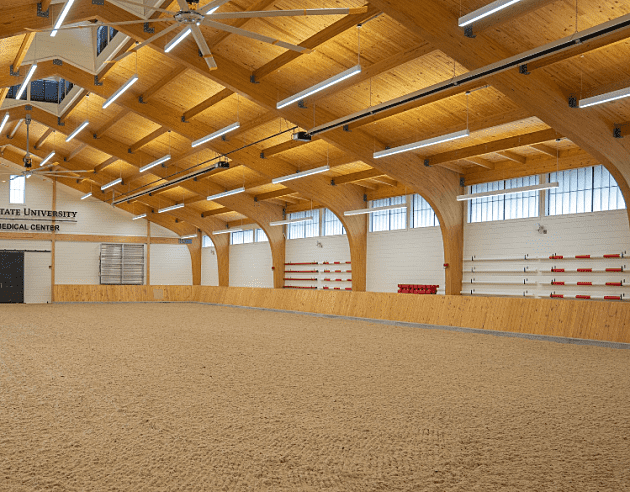- Project uploaded by Cheryl Mazankowski on 02-14-2024
- Project last updated by Krystal – Communications on 06-18-2025
National Center for Indigenous Law, University of Victoria
Victoria, BC
National Centre for Indigenous Laws (NCIL), WINNER OF A 2023 CANADIAN ARCHITECT AWARD OF EXCELLENCE, is a new expansion to the existing Fraser Law Building located on the northwestern edge of the University of Victoria, on the traditional territory of the lək wəŋən peoples. The new building will house the joint degree program in Canadian Common Law and Indigenous legal orders (JD/JID), and the Indigenous Law Research Unit and will reface UVic Faculty of Law.
The primary objective of the building is to demonstrate a deep regard for the environment by implementing environmentally responsible practices. This includes utilizing mass timber, which acts as a carbon sink and helps minimize emissions from prefabricated construction materials. Additionally, the building incorporates effective stormwater management techniques and takes solar orientation into account.
The construction process of the building involved a meaningful approach to the use of trees. Before being utilized as mass-timber columns, the trees were blessed by local Elders, honoring their significance. The design of the building incorporates a mass-timber roof that slopes upwards from the north entrance towards the forest in the south, mimicking the height of the surrounding treetops. This aligns with the sustainability goals outlined in the university's Sustainability Action Plan. By choosing wood as the primary building material, the project contributes to the reduction of greenhouse gas emissions through carbon sequestration. Additionally, the building achieves energy savings through a high-performance building envelope and highly efficient mechanical and electrical systems.
The NCIL building design involved three architectural firms, including Two Row Architect as the prime consultant, an indigenous-owned business in Ontario operated from the Six Nations of the Grand River First Nation and Tkaronto. Teeple Architects and Low Hammond Row Architects were also instrumental in NCIL’s design.
Project Details
-
Year Built
2024
-
Number Of Stories
2
-
Bldg system
Mass Timber
-
Square footage
26,263
-
Construction Type:
Unknown
-
Building Type:
Educational
-
Material Types:
Mass Timber
Cross-Laminated Timber (CLT)
Glue-Laminated Timber (GLT or glulam)
Hybrid (wood with steel or concrete)
Project Team
-
Fast + Epp Structural Engineer
-
Kalesnikoff Mass Timber Glulam and CLT
-
Sansin Architectural wood finishes
-
Seagate Mass Timber Inc Installer
-
Robert Jackson Engineer of Record
-
Low Hammond Rowe Architects Inc. Architect
-
Teeple Architects Inc Architect
-
Two Row Architect Architect
- Project uploaded by Cheryl Mazankowski on 02-14-2024
- Project last updated by Krystal – Communications on 06-18-2025



 WOODWORKS
INNOVATION
NETWORK
WOODWORKS
INNOVATION
NETWORK









